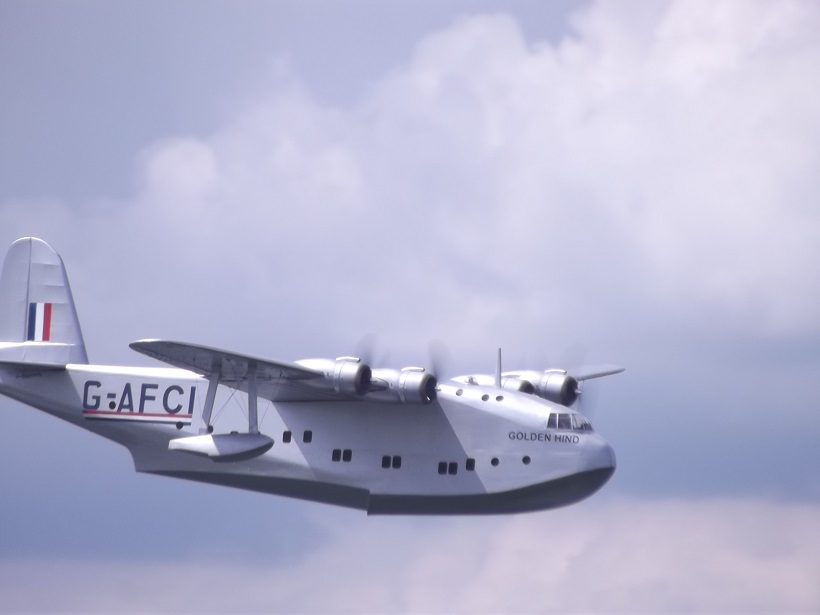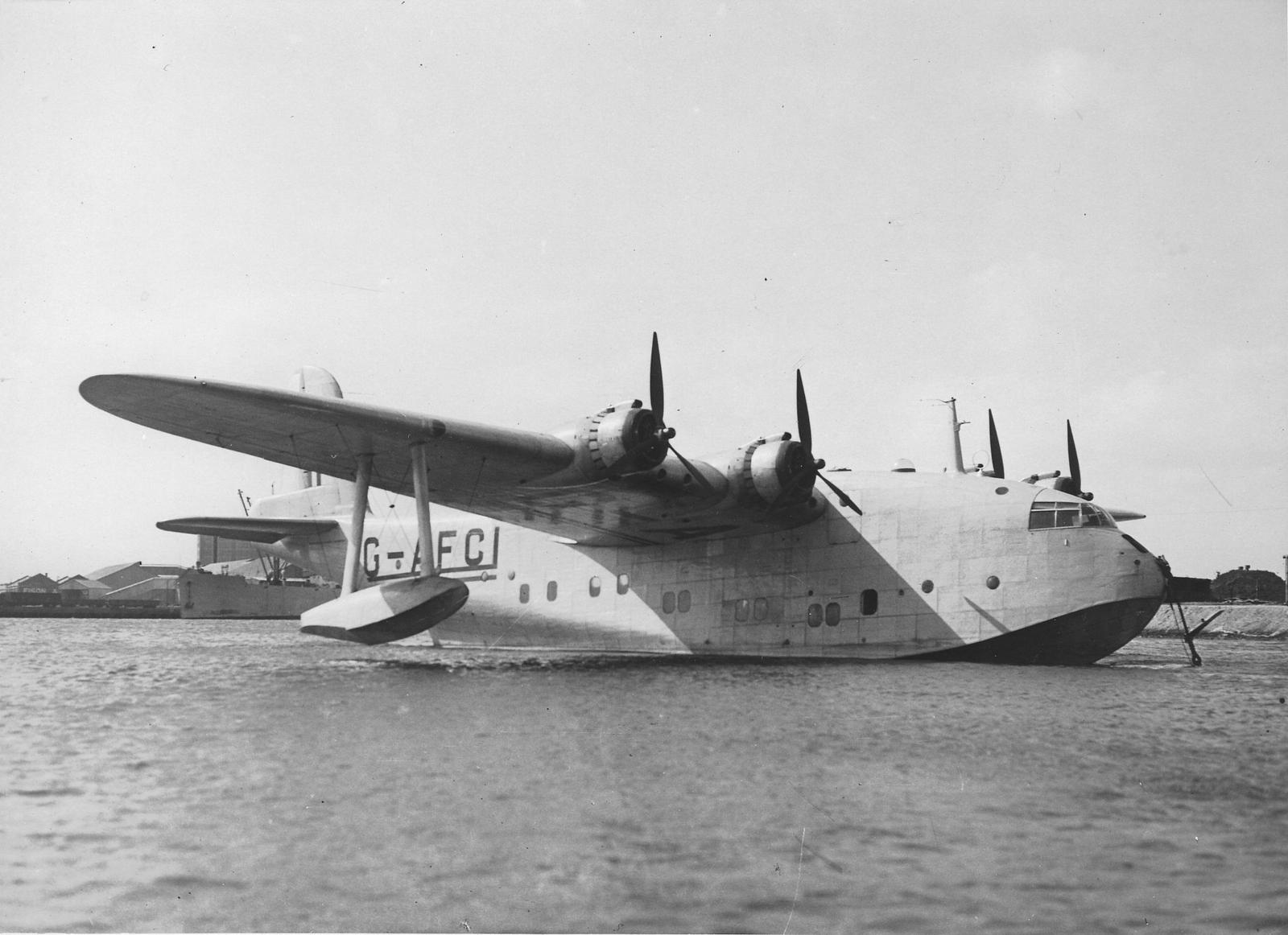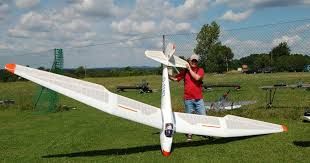|
|
|||||||||||
|
Christchurch and District Model Flying Club |
|
I have an itch that needs to be scratched occasionally regarding the use of thicker airfoils than S 7055 (or similar). This is in order to get a better scale representation of the wing/fuselage relationship in a scale model. I do know that this is just foolishness on my part and that once a model is in the air it is difficult to see anything wrong...but still. Can you see the difference between the two pictures? The whole wing/fuselage relationship is changed completely by using a glider section rather than a scale one. The massive leading edge of the wing, the major differences in the shape of the engine nacelles...it’s all a compromise. But is it a necessary one? I know that glider modellers use scale or near-scale sections on their 1930s gliders such as the Minimoa, so in the hope that they might have some answers, I wrote to Vince Cockett, the sec of Scale Soaring UK. |
|
Hi Vince, I have a question about the behaviour of "vintage" wing sections at model sizes. Specifically, I fly a 100" scale electric power model of a Short G Class flying boat. All my scale models have glider-type wing sections, typically Selig 7055. They are lightly loaded (about 14 oz/sq ft) and so they fly relatively slowly - this is why I chose the wing section. The full size has a very thick section but I have never had the nerve to build a model with a scale section. Your glider builders who make scale models of 1930s gliders seem to use thick scale sections and they obviously fly well. A scale section would look better on a scale model - but would I be wasting my time making one?
Sorry if this is not your special subject Regards, Mike Roach He replied the next day: Mike Thick sections work fine except if you are going to fly off a slope when wind penetration can be a problem. I have also come across trying to blend in a thinner section to the scale and adjusting the fuselage matings, this time it was a Gö 632 where the glider would have stood still or gone backwards in a breeze. As long as the section you use is not excessive, you should be OK. Vince went on to give me an example of where a thicker section works very well indeed: On the Minimoa, the Quabeck 3.5/12 is a popular section of choice.
Unlike the full-size's 10 degrees of washout, you will find that this model has none, yet you will find that the handling could not be safer, with no tendency to drop a wing whatsoever
Vince I then decided to write to my two airfoil gurus. Ivan Pettigrew (who started the whole thing off by using glider airfoils on his scale models) and Trevor Hewson, whom you all know. Ivan first: Thanks Mike for the e-mail. Very interesting. I like the look of that Gö 632 . It has what I think is called call a reflexed trailing edge. The lower surface sweeps up towards the trailing edge. The Eppler 374 is like that, but not such a thick section. High performance gliders have trailing edge flaps that go to what they call a negative setting of something like 5 degree and it is used for high speed penetration. When they are at what would be 0 degrees the lower surface is not swept up, and the airfoil works nicely at lower speeds. But at high speed I believe the swept up trailing edge results in less drag and the airfoil will fly faster on less power. Beside I believe there is less negative pitching, and that means the horizontal tail surface does not have support so much negative loading. That means the main wing does not have to support so much weight, so it has a double advantage. I have used Eppler airfoils in three thickness ranges. In my Lancaster I used the E-197
which is the thickest and it flew well. But in those days we had puny motors and heavy nicad batteries. The advantage of the thick wing is not so much the lift, but the fact that it can be built lighter than a thin wing of equal strength. When I learned that thin wings were more efficient I tried the Eppler 195 and 193. I believe the wing of my Chipmunk is a Eppler 205 which is almost the same thickness ratio as the E 195 and that is a nice compromise.
In my first twins that were intended to fly fast, like the Mosquito and Comet, I used the E-374
and it worked well for a good speed on minimum power. But it is a bit more difficult to get a true reading on the incidence in those airfoils, that I believe that one of the advantages of the S-7055 and even the Clark Y is that a the lower surface is flat from the main spar to the trailing edge and makes it easier to build the wing true without any warp.
With the excess power / weight ratio we have now with our new equipment, efficiency is not so necessary as it was in electrics 20 years ago, and the Go 632 looks as if it would have a really gentle stall and could be built very light. As you mention, it would look far closer to the type of airfoils used in transport planes in the era of the Short Flying boats. At the end of the day, in our models we are not so concerned with maximizing efficiency like they do in full scale aircraft, and the way we build our models, and the size range we are using, I don’t know that there is a huge amount of difference. There is an up side to every type, so take your choice and enjoy it. Greetings from Ivan
Trevor’s response brought some interesting observations:
Thanks for that Ivan - it’s good to hear an account of practical experience with these airfoils on something other than high performance gliders which, as you say, are a rather different application from our sport scale electric types. I must agree that I haven’t noticed any great difference between the various sections used. For us, stall characteristic is more important than efficiency and, with the lighter wing loadings we use, we rarely fly anywhere near the stall point anyway. After wing loading, I think the next most significant factor in provoking bad stall behaviour is an over-sharp leading edge. As long as the leading edge is well rounded then hopefully the wing will begin to stall at the trailing edge rather than suddenly break away from the front. After that, the finer points of the wing contour seem less critical. After all, symmetrical sections still manage to perform pretty well - even on slope soaring gliders! So has my itch gone away? On the contrary, I think the next big model I make will have the Gottingen section recommended by Vince and supported by Ivan—at least if it falls out of the sky I’ll have someone else to blame! Mike All these airfoils and thousands more can be accessed via the UIUC airfoils data site at http://m-selig.ae.illinois.edu/index.html. Each one is illustrated by a .gif which can be downloaded. |
|||||||||||||||||||
|
S 7055 |
|||||||||||||||||||
|
Go 632 |
|||||||||||||||||||
|
HQ 3.5/12 |
|||||||||||||||||||
|
E 197 |
|||||||||||||||||||
|
E 195 |
|||||||||||||||||||
|
E 193 |
|||||||||||||||||||
|
E 205 |
|||||||||||||||||||
|
E 374 |
|||||||||||||||||||
|
Clark Y |
|||||||||||||||||||
|
[Home] [Chairman's Chatter] [Editorial] [Diary of a Flyer] [Airfoils] [What goes up] [Copy Shop] [Tailpiece] |





 Perhaps the most graceful aeroplane ever built?
Perhaps the most graceful aeroplane ever built?




